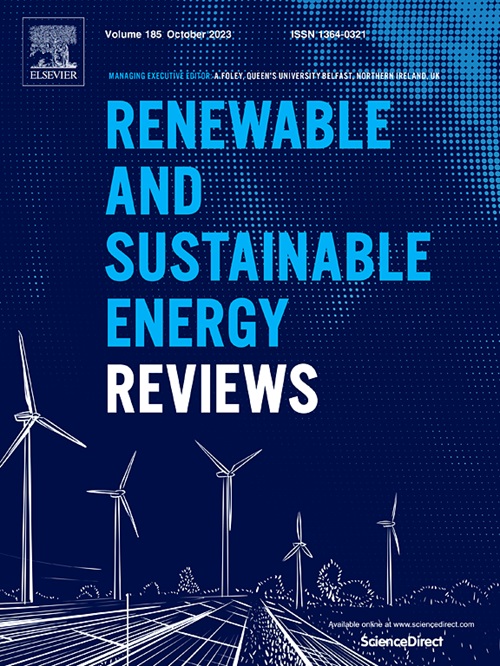Techno-economic analysis and network design for CO₂ conversion to jet fuels in the United States
IF 16.3
1区 工程技术
Q1 ENERGY & FUELS
引用次数: 0
Abstract
The conversion of carbon dioxide (CO2) into jet fuel holds significant potential for reducing CO2 emissions, providing an alternative to carbon-based resources, and offering a renewable means of energy storage. The objective of this study is to conduct a techno-economic analysis and optimize the supply chain network for converting CO2 to jet fuel in the United States, aiming to minimize total costs while assessing the environmental and economic feasibility of two CO2 conversion pathways. This first pathway is based on Fischer-Tropsch synthesis (FTS), and the other one is based on the valorization and upgrading of light methanol (MeOH). Incorporating spatial and techno-economic data, a mixed-integer linear programming model was developed to select source plants and conversion pathways, locations of conversion refinery sites, and the amount of captured CO2 across the United States. The optimal results indicate that the FTS pathway is adopted at all selected refineries when the hydrogen price is $1000/t and the operating cost, mainly electricity used in conversion, is reduced to 5 % of its current level. Under this scenario, the total annual profit is $8B and the net carbon emissions are −88,783,284 tons. The sensitivity analyses reveal that the prices of electricity and hydrogen significantly contribute to total production costs. The CO2 recycle percentage of the FTS pathway influences the choice of applied pathways at refineries. Additionally, a higher conversion rate holds a substantial promise for reducing the total production cost and can make the MeOH pathway a viable choice.
求助全文
约1分钟内获得全文
求助全文
来源期刊

Renewable and Sustainable Energy Reviews
工程技术-能源与燃料
CiteScore
31.20
自引率
5.70%
发文量
1055
审稿时长
62 days
期刊介绍:
The mission of Renewable and Sustainable Energy Reviews is to disseminate the most compelling and pertinent critical insights in renewable and sustainable energy, fostering collaboration among the research community, private sector, and policy and decision makers. The journal aims to exchange challenges, solutions, innovative concepts, and technologies, contributing to sustainable development, the transition to a low-carbon future, and the attainment of emissions targets outlined by the United Nations Framework Convention on Climate Change.
Renewable and Sustainable Energy Reviews publishes a diverse range of content, including review papers, original research, case studies, and analyses of new technologies, all featuring a substantial review component such as critique, comparison, or analysis. Introducing a distinctive paper type, Expert Insights, the journal presents commissioned mini-reviews authored by field leaders, addressing topics of significant interest. Case studies undergo consideration only if they showcase the work's applicability to other regions or contribute valuable insights to the broader field of renewable and sustainable energy. Notably, a bibliographic or literature review lacking critical analysis is deemed unsuitable for publication.
 求助内容:
求助内容: 应助结果提醒方式:
应助结果提醒方式:


